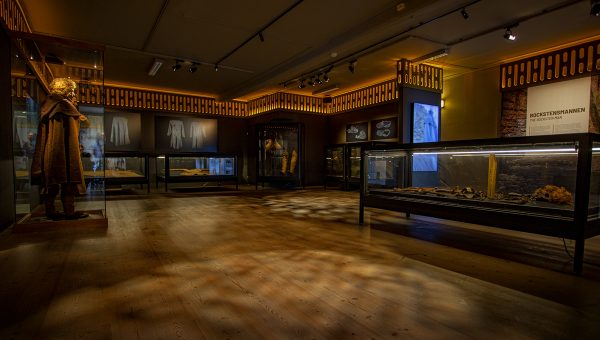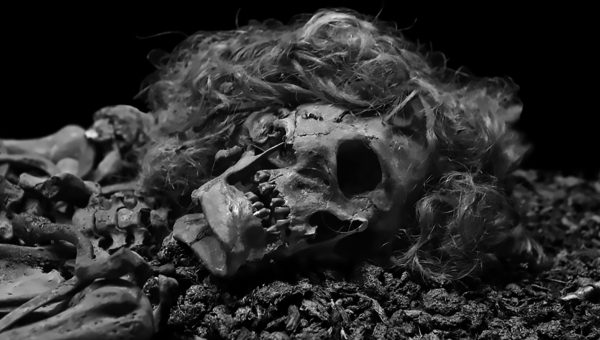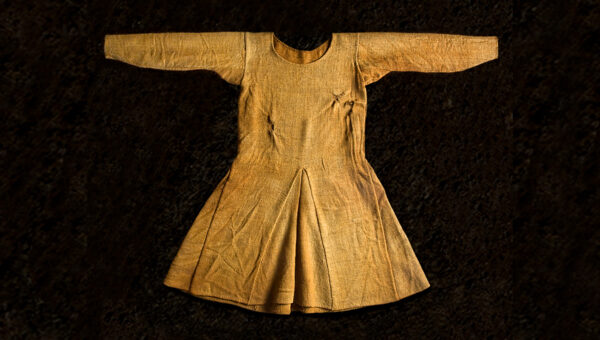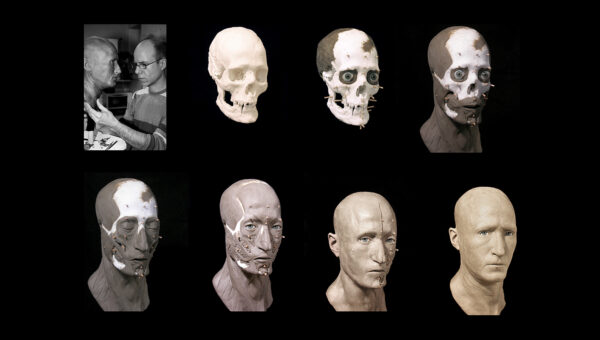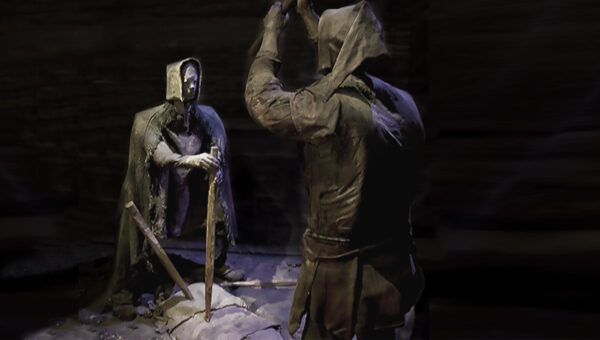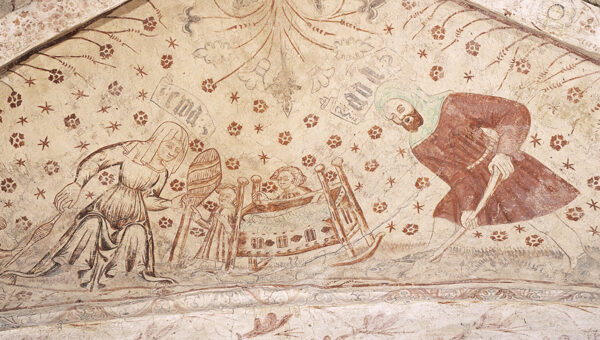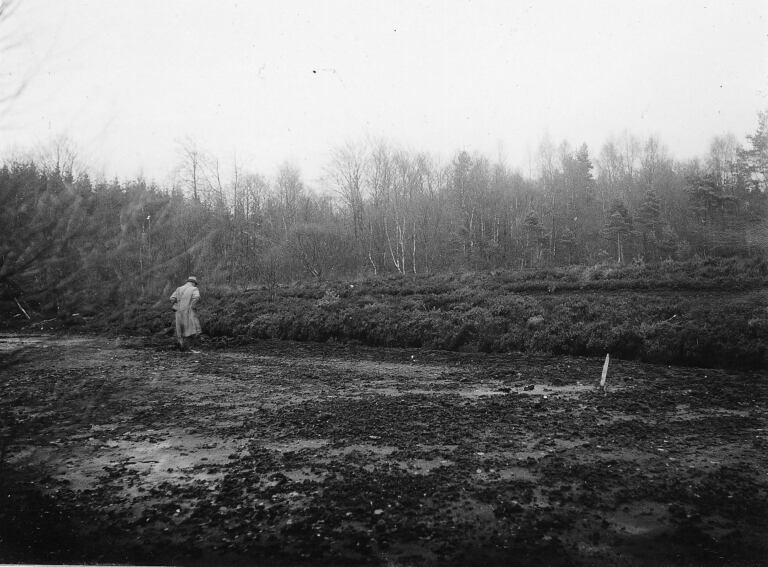
HOW THE CHILDREN THURE AND GULLI FOUND THE BOCKSTEN MAN IN 1936
It was the day before Midsummer’s Eve, June 22nd, 1936. 11-year-old Thure Johansson walked behind the horse, back and forth across the bog, to harve peat. Behind him, his five-year-old sister Gulli clattered with her bare feet. Their father Albert was in the turf barn nearby. It was evening and soon the workday was done so it was time to go home. But then suddenly Thure saw that something was stuck in the harrow. He stopped the horse.
Thure and Gulli looked surprised at the pieces of cloth and bones that the harrow had torn out of the ground. Could it be something the dog had buried? Thure ran to get their dad. When they dug a little deeper with their hands in the bog, they found more fabric and bones. They realized that they had found a dead person, but it was too late in the evening to call the police, so they covered the body and went home.
Early next morning Thure’s older brother Harry cycled down to the local police attendant Axel Johansson in Rolfstorp and reported that they had found a corpse in the bog. The County Police and Varberg City Doctor Söhrman were called for. They came to the site and confirmed the finding of a dead man in the bog. The bones were still below the damaged surface. Around them were pieces of cloth, “full of patches,” the policeman said. The man had beed stuck to the ground by wooden poles.
The county police and the doctor soon established the man had been dead for a very long time. The possible murder was therefore time-barred on the spot and instead they called the local vicar to book a funeral for the following Sunday.
In the evening, Doctor Söhrman celebrated Midsummer with friends. He then met the Director of Varberg Museum, Albert Sandklef. When the doctor described what had been found in the bog and drew up a picture of one of the garments, Sandklef understood that he had to investigate the find. He went home to organize an expedition.
On Midsummer’s Day , a caravan of 10 cars drove up to Bocksten’s bog. Thure later told that it could go several days without anyone seeing a single car in the area. Seeing so many cars at the same time was a strange experience.
Museum Director Sandklef soon concluded that the find – most probably medieval – must be investigated and taken care of. After measuring and photographing, the find and the peat surrounding it were dug up and laid on a freshly made wooden stretcher. The whole find was then transported on a truck to the museum at Varberg fortress. And already in August of 1936 the first exhibition of the Bocksten Man opened to the public.

